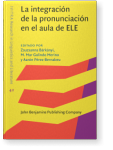Chapter 12
Hacia una evaluación comunicativa y eficaz de la pronunciación del español
El presente trabajo analiza cuestiones fundamentales relacionadas con la evaluación de la
pronunciación de una lengua adicional (L2) en los contextos de enseñanza. Con este fin, en la primera parte el
capítulo introduce un análisis sobre las principales perspectivas (inteligibilidad, comprensibilidad y acento
extranjero) desde las que se puede abordar la evaluación de la pronunciación, revisa algunos factores no lingüísticos
que pueden afectar las evaluaciones de estas dimensiones y trata las implicaciones que los resultados de las
investigaciones tienen para el aula. En la segunda parte, se ofrece una guía de actuación con recursos prácticos y
recomendaciones para que el profesorado de español pueda realizar una evaluación eficaz de la pronunciación. Finalmente,
el capítulo concluye con una reflexión sobre futuras líneas de investigación.
Article outline
- 1.Introducción
- 2.Conceptos clave de la evaluación de la pronunciación
- 3.Contribuciones de la investigación actual
- 4.Buenas prácticas docentes en la evaluación de la pronunciación
- 5.Futuras líneas de investigación en este campo
-
Referencias bibliográficas
This content is being prepared for publication; it may be subject to changes.
Article language: Spanish
